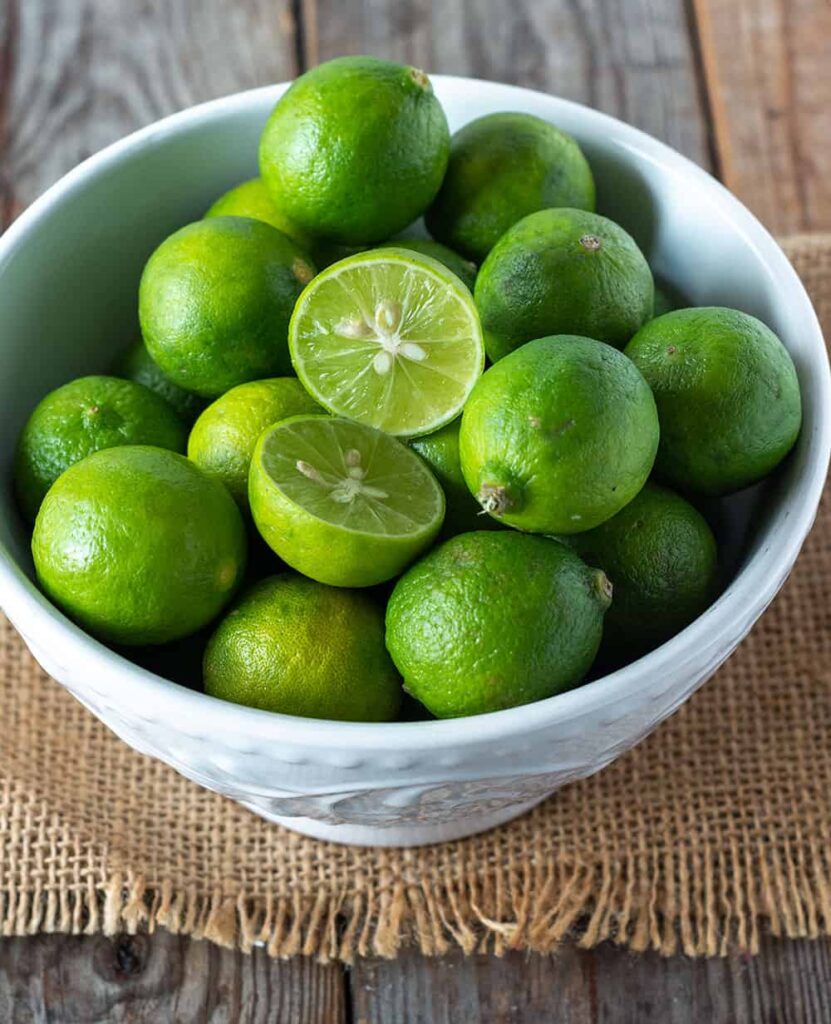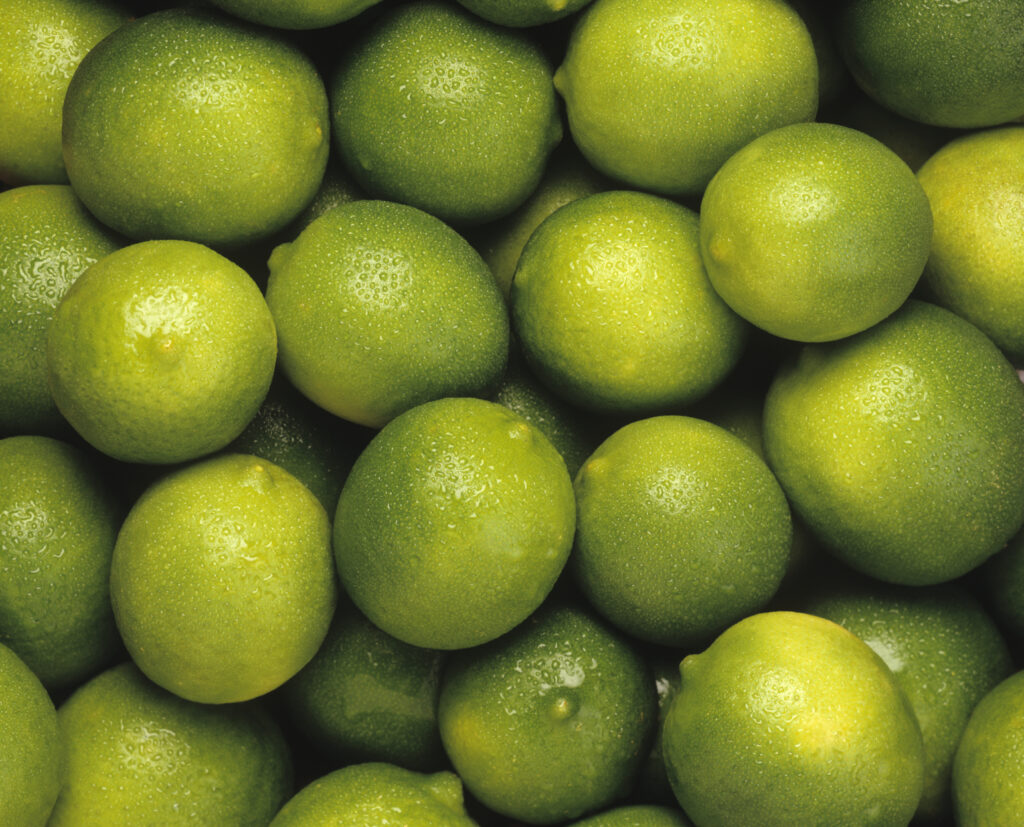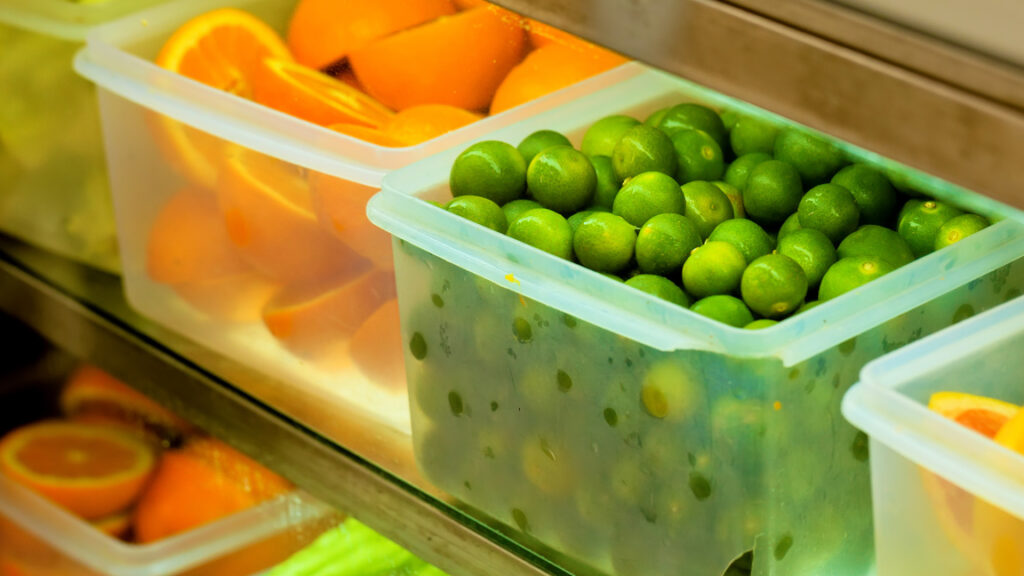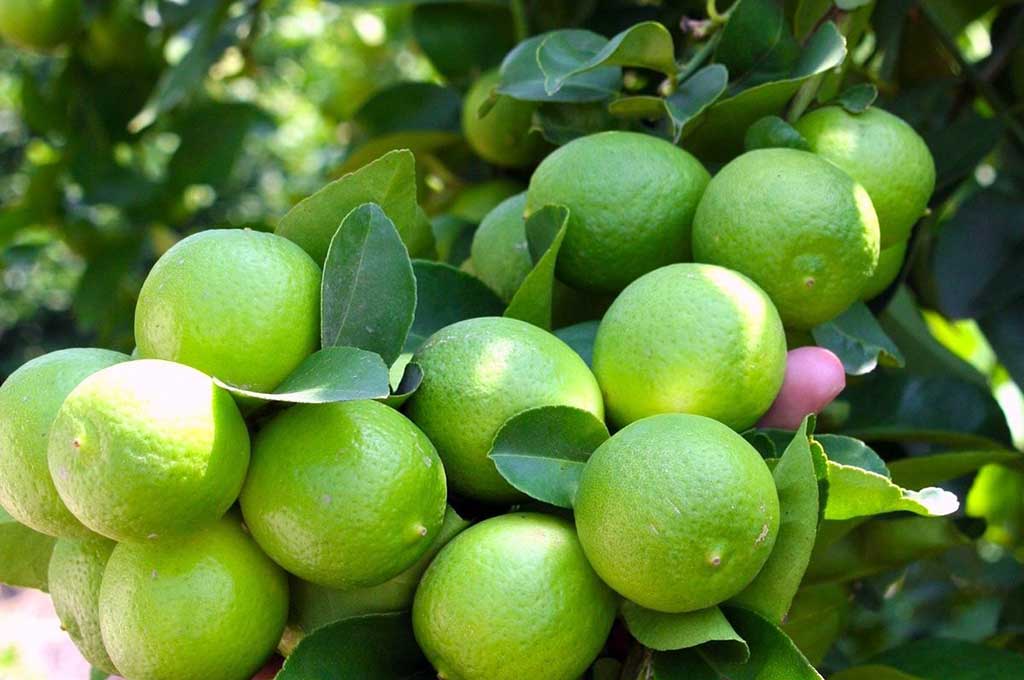Growing lime trees is rewarding though it takes you several years before harvesting lime tree for the fruits to be ready for collecting from the tree.
Nevertheless, the long wait is worth it because the fruits are flavorful and healthful.
It’s difficult to tell when lime fruits are ready since they remain green even when it’s time to pick them.
Note that lime trees have several types, but when they fully get ripe, they look similar.
Limes have a sour taste even when mature, but you are better off harvesting them before turning yellow.
It’s best to pick them while still green and keep them on a shelf where they’ll turn yellow from ready for consumption.
You need to know the varieties of lime trees and how they look to infer harvesting lime trees.
Tips to know before harvesting lime trees
1. Identify the various types of Limes when harvesting lime trees
This lime is green and relatively small. It’s about 2 inches in diameter.

This lime is more extensive in appearance and more greenish-yellow when ripe.

2. Color and taste of a lime fruit
While harvesting lime trees, you might not be sure of the best time to harvest since you can only pick the fruits when they are still green. Much as limes turn yellow when ripe and after picking, they still taste sour.
To help you determine a green lime is ready enough for harvesting, pick one from the stem and cut it into two parts. When you squeeze it, you will notice it will be juicy.
A lime fruit ready for harvesting will also be light green, so you can look out for that characteristic when checking for the best time to pick a lime tree.
3. Signs of ripeness before harvesting lime trees
When harvesting lime trees, the fruits should be smooth and slightly soft when you squeeze them. Try pressing the fruit, and you will feel the softness.
However, when you leave lime fruits on a tree for too long, they begin to get a wrinkled appearance and eventually fall from the trees, and they will also turn yellow.
4. Harvesting season
Most times, harvesting of lime trees occurs during the summer season, and they take about three to four months to attain peak flavor. Nonetheless, you can harvest lime trees in USDA plant hardiness zones 9-10 all year round.
5. Storage after harvesting lime trees

After picking limes when they are still light green, keep them indoors or outside in a cool place at room temperature until they become ripe.
You have chances of harvesting the limes at the peak of ripeness, and you are free to use them right away.
Avoid keeping the limes in the fridge because they might get damaged due to much coldness.
Keep them in a closed water jar, and they will stay for two to three weeks without going bad.
How to tell if Limes are ripe?
When lime is not yet ripe, it’s dry and does not have flavor, and if you intend to use it for cocktails or to marinate your food, it will lack the Flat.
You must pick the lime fruit off the tree when it’s ready and close to maturity and then store them for full ripening.
When telling if lime is ripe, you will have to look at its weight, color, aroma, and texture.
1. The powerful aroma before harvesting lime trees
A ripe lime will have a powerful aroma when you smell it.
Unlike unripe lime fruits, you might not feel a strong smell, so you are keen before picking it off the tree.
2. Green limes ready for harvesting lime
A green lime has more flavors than the yellowish-green one’s because they are still fresh.
So you don’t have to wait for lime to become yellow to determine whether it’s ripe or not. So long as it’s juicy when you cut it.
3. The lime skin when harvesting lime trees
The skin of a lime tree is smooth when you touch it if it’s ripe. When a lime gives in to a squeeze, it indicates ripeness, but it shouldn’t be too soft because that would suggest that it’s overripe.
4. Heavy limes
A ripe lime is always thick because of the much juice in it. A heavy lime implies it’s maturity and readiness for harvesting and consumption.
So while picking a lime, ensure to look out for the above elements to determine whether it’s ripe and ready for harvesting. Once you confirm those, go ahead and pick your limes from the tree, ready for use.
Key lime harvest season
Key lime trees grow in the U.S Department of Agriculture plant hardiness zones 10-12. They have delicate white blossoms that flourish periodically, which infuse the air with their sweet floral fragrance in the tree.
Blossoms on a key lime tree are small, white, and fragrant. The flowers bloom at the base of a leaf along the leaf blade. In other words, they are found at the end of the branches and appear on the tree’s interior.
Key lime trees put on blossoms all year round but occasionally produce fewer flowers from late fall through early spring. So the main blooming season is spring.
When you plant a lime tree at the entrance or doorway, it helps it get air and produces a floral scent because of the proper aeration.
Key limes are the right choice as edible ornaments because of the year-round blossoms and the tree’s glossy leaves.
After flush flowering in late spring and early summer on a lime tree, fruit production begins. Harvest of fruits is ready five to six months after blossoming on a key lime tree. When flowers fade and petals fall off, tiny immature limes formation begins.
What to do with yellow limes?

Lime is always uniformly green in color and has a good flavor while still with the natural light green look.
But after picking your limes, they might turn yellow due to several issues. If you take some time after harvesting without using the limes, they will turn yellow.
It happens because you put the fruits in a hot place or get much sun heat exposure, making them get overripe, turning yellow, and changing the flavor.
Do you count limes with a yellow color terrible?
Depending on the type of lime, it’s flavor might be strong, and the fruit is juicier. Some limes become more bitter, depending on the style.
If it’s the sour type, it includes the Tahitian and the Mexican lime, acidic.
However, sweet limes are yellow when ripe and ready to use. Sweet limes are not very acidic like the sour limes but are more prevalent in India, Vietnam, Egypt.
When limes become yellow, they are ripe and have sugars, which give them a delicious taste. But you will hardly find yellow limes on the market because it’s easy to ship unripe fruits because of the hardiness and can stay longer.
Yellow limes are gloopier and squishier than the hard green limes because they are over ready and very ripe.
What can you do with ripe limes?
You can use limes to do different things by zesting on toppings and adding in recipes. You can cut in slices, cheeks, and wedges to garnish then serve with meals and drinks.
You can use ripe limes to the following;
1. Juicing
Add limes with other fruits by squeezing it into mango, pawpaw, bananas, sugarcane juice, and yogurt to add the lime flavor into the cocktails.
2. Add slices to water
Lime is a detoxifyer if you add it’s pieces to water and leave it for about 3hours and then drink the water. You can also add the slices to hot tea.
3. It’s Preserves and Pickles
When you add lime to your meals, it can be a preservative, and you can use it to pickle onions to give them a beautiful and delicious taste.
4. Marinates and makes sauces
When you mix lime, ginger, and soy marinade for fish sauce and other sauces, it makes a good tasting soup. Before cooking or grilling your meats, you can first marinate with your ingredients lime to give a good flavor.
5. Side dishes
When you are making a good meal, remember to put salads which you can dress in lime and other mixtures including coleslaw mix of carrots, cabbages, papaya salad, mango salsa, etc. When you add lime wedges to these, you will give a delightful flavor.
6. Desserts and Baking
You can make a rich lime ice cream, squeeze the lime juice into creamy desserts such as BlackBerry verrines, home-made yogurt, etc. When baking a dessert cake, add lime to your pudding mixture, and it will be so tasteful because of the unique lime aroma.
7. Health benefits
Limes have health benefits. When you combine lime with honey, it makes a cold and flu remedy, boosts immunity, helps fight some cancer cells, and prevents heart diseases. Lime is also suitable for skin health and hair to prevent itchy scalp.
In conclusion, a lime fruit is ready for harvesting when light green rather than waiting for it to become yellow. It will then be over mature.
It would help if you kept checking it for the signs of readiness in this article to know the best time and what to look out for in a lime fruit before picking it because it’s very beneficial to your kitchen and health.
Frequently Asked Questions
Limes ripen for several month-season, and you can pick them two years round. Harvesting is mainly during the summer season.
After harvesting limes, you pick them from the tree when they are light green and soft when you press them. After some good storage time at room temperature, a lime will become yellow, and that’s when it will become ripe and ready to consume.
Persian lime trees are best when light green if in the U.S Department of Agriculture zones 9 through 11. Pick limes that do not have bruises and decays; the skin shouldn’t be rough and wrinkled because it indicates dry overripe fruits.
Mexican limes often get ripe year-round, the fruit in late winter and spring(March). The main ripening period is the summer season through early winter.
No, limes do not get ripe off the tree; you need to pick them close to maturity and store them. You only need to know the differences between ripe lime and one which is not ripe. The green color, excellent aroma smell, the heavyweight of the fruit to determine it’s maturity.
A lime, which is hard when you press it, is ripe and does not have any juice. So you need to twist one lime off the tree and cut it as a sample to check if it’s juicy. If the fruit feels plump and has a fresh taste and acidic, then it’s ready to pick from the tree.
